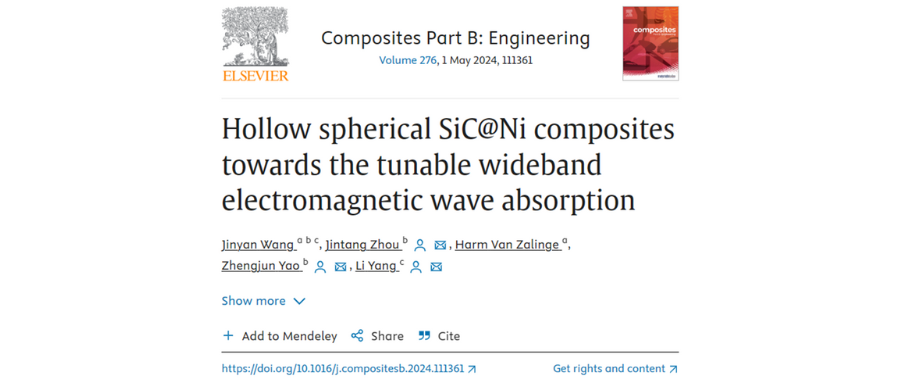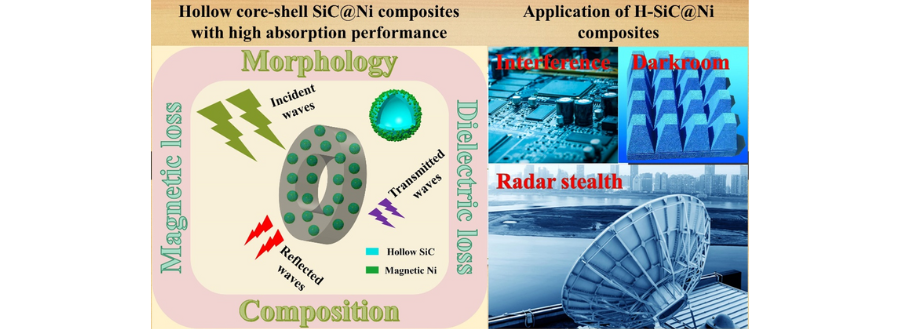09 Apr 2024
Recently, Professor Li Yang's team from Xi'an Jiaotong-Liverpool University prepared a hollow silicon carbide@nickel (H-SiC@Ni) core-shell composites, which can take full advantage of dielectric loss and magnetic loss. The composites show excellent wave-absorbing performance due to the synergism of dielectric loss and magnetic loss. When the decomposition temperature is 600 ℃, and the reduction temperature is 750 ℃, the effective absorption bandwidth of the prepared H-SiC@Ni composite can reach 8.8 GHz at a thickness of 2.6 mm.

Compared with the pure hollow silicon carbide (H-SiC), the effective absorption bandwidth performance is increased by 3.5 times, and the thickness is reduced by 3.8 times, which presents a breakthrough of "thinner, lighter, broader and stronger" wave-absorbing material. The research outcomes have now been published in the international journal Composites Part B: Engineering.
Based on previous research on different morphological SiC and dielectric composites, this work introduces magnetic materials to further improve the wave absorption performance of H-SiC.
"It is widely accepted that magnetic metallic Fe, Co and Ni are promising candidates for introducing magnetic loss and boosting absorption capability. Among them, Ni is one of the most abundant materials on earth and has good corrosion resistance and mechanical strength. Thus, magnetic Ni is introduced to dielectric H-SiC to strengthen the absorption performance." Professor Yang said.

The research team prepared H-SiC@Ni composites with different conductive properties by adjusting the content of raw materials and studied the influence of conductive properties on absorption performance. The results illustrate that the conductivity loss is enhanced with increased conductivity, which improves the absorption performance. However, as the conductivity continues to grow, the reflectivity is enhanced, which reduces the incident electromagnetic waves and absorption performance. In addition, the influence of deposition and reduction temperatures on absorption performance was also revealed. The results showed that the crystallisation and content of magnetic Ni at high temperatures significantly enhanced the magnetic loss and absorption performance of the composites.
The project belongs to the joint programme of Xi'an Jiaotong Liverpool University (XJTLU) and Jiangsu Industrial Technology Research Institute (JITRI). Professor Yang said that the successful development of the project was due to the efficient execution of doctoral student Jinyan Wang; meanwhile, thanks to the combination of XJTLU and JITRI, which provides advanced and comprehensive devices for analysis.
"As an international academic community, XJTLU provides many cutting-edge international seminars and reports, which can teach students the most advanced technologies and methods. At the same time, JITRI has the world's top characterisation equipment, which can accurately analyse elemental composition, microstructure, mechanical properties and physicochemical properties of different samples." Professor Yang said.
The PhD student Jinyan Wang has completed her doctoral project in just two and a half years after joining Xi 'an Jiaotong-Liverpool University in September 2021. During this period, she has published three articles in top international journals, in addition to the above-mentioned Composites Part B: Engineering, and in journals such as Chemical Engineering Journal and Materials Characterization.
Material provided: Professor Li Yang
Editor, Translation: Luyao Wang
09 Apr 2024







